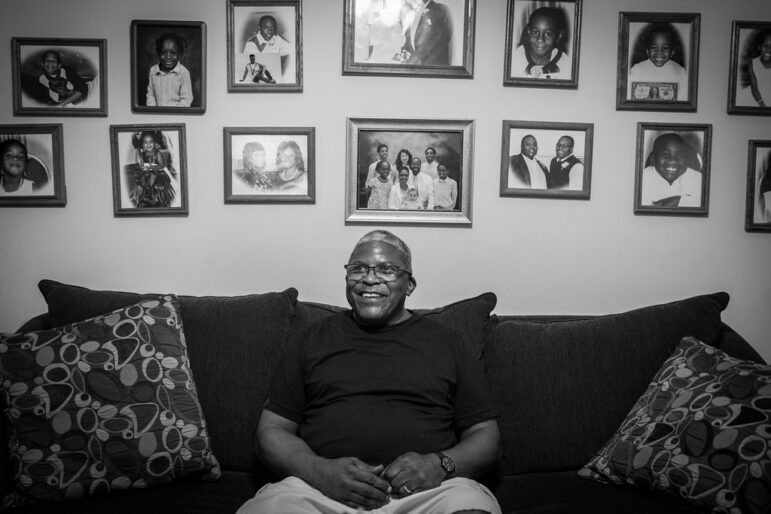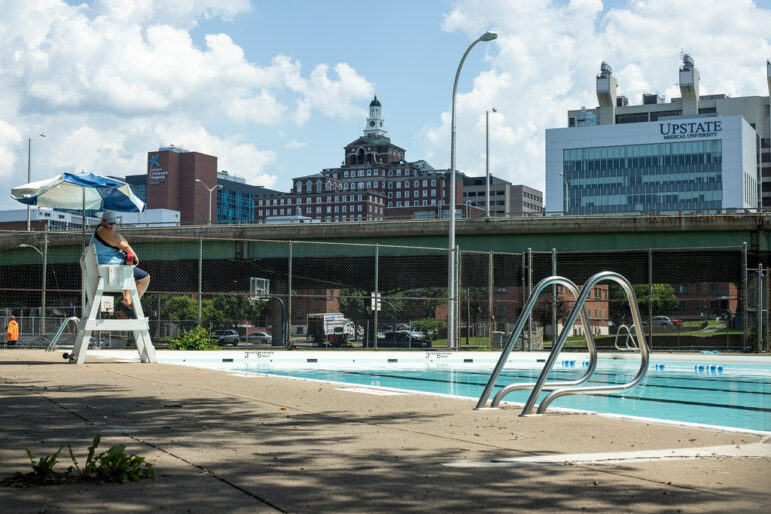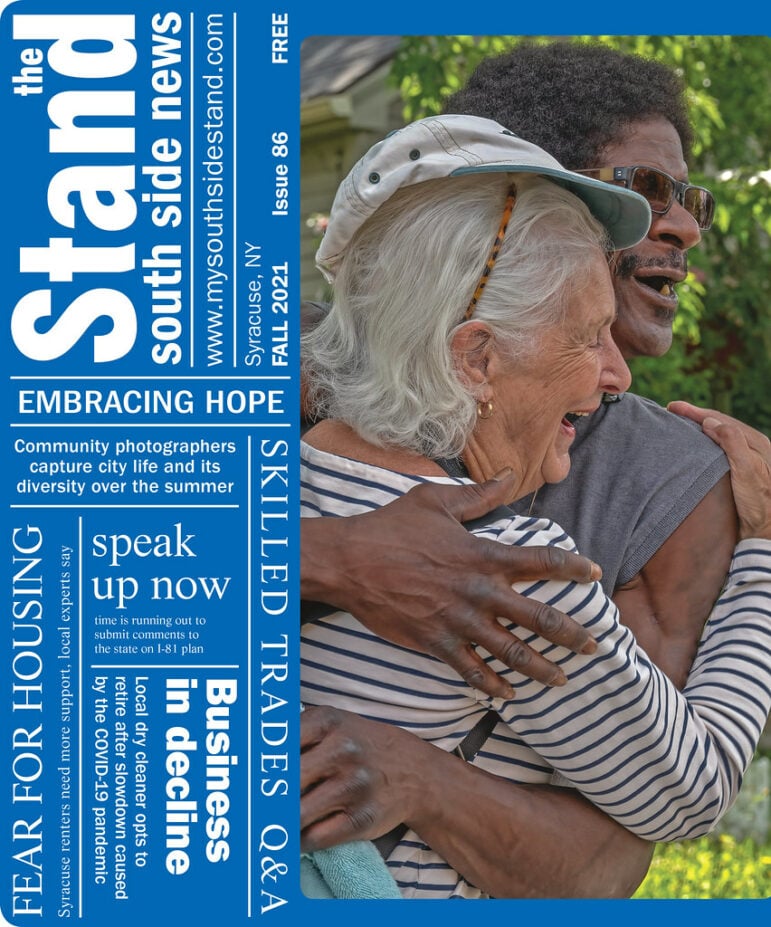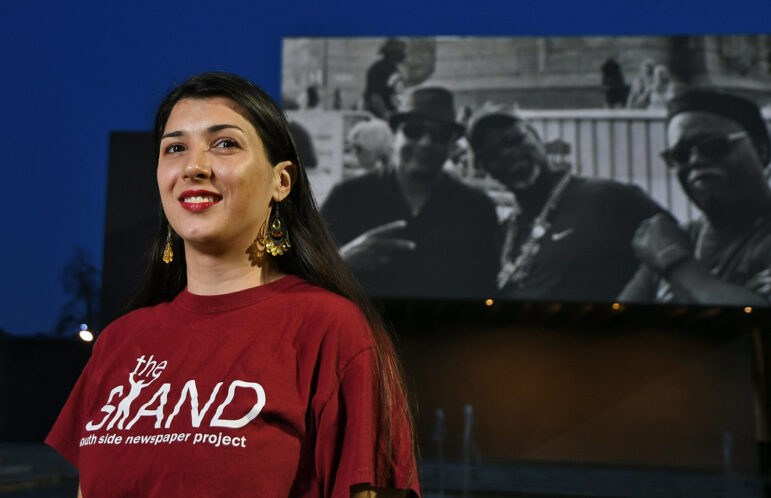How organizing a Photo Walk can build community and engage your audience


A Photo Walk is a social photography event where photographers gather to explore a neighborhood, shoot photos and practice their skills. The concept is simple: grab a camera, walk around and snap some pictures for a few hours.
The hyperlocal media project I run has organized an annual Photo Walk for the past 12 years. Honestly, we don’t know why more outlets don’t do it. As a nonprofit, in addition to our mission to inform the community, we aim to train residents to tell their own stories. For this, we’ve offered sessions on interviewing, the inverted pyramid and news writing. But those sessions, while well attended and engaging, resulted in few completed article submissions. Our Photo Walks, on the other hand, result in hundreds if not thousands of images.
The Photo Walk does not exist in isolation. It is a centerpiece of and companion to the South Side Newspaper Project, a hyperlocal outlet with a mission to serves Syracuse’s South Side community. The project delivers news online and in The Stand, a quarterly newspaper.
Images captured during the annual Photo Walks make for amazing content and build neighborhood identity and pride for residents who typically feel unrepresented in mainstream media.
How it began
When I organized the first Photo Walk in 2010, it mirrored a global walk created to bring together communities of photographers across the world. The worldwide walk allowed “Walk Leaders” to register sessions in their communities. Thus, our offering was one of many organized in cities around the world on the same day.
After three years of coordinating with the worldwide walk, ours split off when the global event moved to the fall. We continued each July, capturing one Saturday in our target neighborhood, year after year.
Walkers meet at a designated location, then spend a few hours socializing, capturing images and sharing with like-minded people. The event allows people to really stop and engage in their physical surroundings, collectively.
Attendees crowdsource content around a unified mission. It’s meaning-making that transcends individual perspectives and enables audiences and participants to reconsider their own views. The offering is truly mutually beneficial.
For residents, the Photo Walk generates community conversations, creates allies, develops skills and establishes renewed pride for the community they call home. For participants from outside the neighborhood and our journalists, the walk is a direct way to engage the community because we meet people where they are — sometimes literally in their front yards. It provides an amazing opportunity to casually engage with residents — in low-income housing complexes, neighborhood parks, local shops and directly on the street — and listen to their stories.
Planning the details
The first need for a Photo Walk is to recruit a professional photographer to lead participants on a guided path through the neighborhood. This individual can be an employee of the outlet, a retired photographer, or from the profession and interested in a volunteer opportunity.
Next, plan a route that is under two miles but that can hit many points of interest in the neighborhood. The best city Photo Walks are 1.5–2 hours. Remember, people with cameras will move much slower because of the heavy equipment and frequent stops to explore and snap pictures.
Photo Walks often start at a park so participants can easily gather. To align with our nonprofit mission of training the community, our event opens with a short photo training. Participation in the opening lesson later became optional, allowing attendees to complete both the training and walk or to only join the walk.
For us, accommodating the training required the event to be held at a large community space. This is something to consider when planning your event. Having a central location allowed participants to park, come into the center to meet others, sit in on the lesson, and have a home base where they could leave items, pop into the bathroom and enjoy water and light snacks.
Following the walk, we were also able to meet back up and share images. For this option, we encourage participants to drop off memory cards for a coordinator to upload while they stepped out to grab lunch. Next, all return to eat together while viewing each other’s photos in a slideshow. One year, a grant allowed us to provide a catered meal by a local chef. For other organized walks, we’ve reserved space at a nearby restaurant where a setup can be waiting for sharing images. COVID taught us that photos can also be shared virtually. So there are many options to consider.
The share-back gives participants a chance to reflect, provide their thoughts and complete a short survey about the event, which has proven to be useful data when we’ve applied for future grants.
Why it works
The Photo Walk works so well because taking a photo is something everyone has done. It’s not intimidating to ask someone to snap a photo, while being asked to contribute an article can seem daunting.
By design, walks bring together diverse segments of the Syracuse community to celebrate the often unseen corners of our city. Participants include current residents and those interested in photography from the surrounding suburbs and even the wider region. People from a wide range of ages, ethnicities and socioeconomic classes participate as well. No matter their ability — professional to amateur — all are able to stretch their skills by trying new things and learning from others.
The end result is countless images from multiple perspectives that reflect the neighborhood back to itself. The images both sample everyday life and tell larger stories, especially of people often marginalized in mainstream media. Walks have generated a bank of some 11,000 images. Most recently, a small portion of that portfolio — 51 photos — went on display in a retrospective exhibit at ArtRage Gallery in Syracuse.

Every aspect of this collaborative undertaking works to fulfill our nonprofit’s mission. The walks have grown in popularity because not only are they engaging for all involved, they’re also fun.
“It’s become a signature event for The Stand,” said Steve Davis, founder of the community newspaper. “It really became much more than I ever thought that it would be.”

Davis says the Photo Walk helped the South Side Newspaper Project discover the many shades of character in the community and just how beautiful a neighborhood can be.
For our outlet, the interactions inform future reporting. Participants are encouraged to engage in conversations, learn about residents and record information to add to photo captions, as well as collect story ideas.
Participants say they’ve met community members they would not normally have the opportunity to encounter. Some participants from outside the community went on to seek volunteer opportunities or support needs they learned about while on the walks.
The Stand publishes the best shots in a special edition of the print newspaper and features them on our social media. All images are saved in an online archive. Participants are not required to share photos, yet nearly 90% have.
The consistency of visiting the neighborhood with a clear mission also builds trust. Engaging an audience repeatedly over time contributes to the development of greater trust, connectedness and social capital, according to a study by the University of Minnesota.

Clifford Ryan, a known antiviolence activist in the community, said he’s happy to have his home shared through the lenses of others, highlighting it as he knows it: a place of love, strength and care.
“Community means everything to me,” said Ryan, who also served as a paid community guide for multiple Photo Walks. “And there can be no unity without community.”
The power of photography is that it captures a moment in time that remains for later reflection.
“We all know there’s some adversities that we face in the community,” Ryan concluded. “But [the Photo Walk] is a great way to show the community is a place of love.”
Ashley Kang is director of the South Side Newspaper Project, run in partnership with Syracuse University and Syracuse’s South Side residents. She launched the Photo Walk in 2010 and has grown and expanded the community engagement initiative over the last decade. She also serves as an advisor to the Syracuse City School District media program. Email her at ashley@mysouthsidestand.com.





